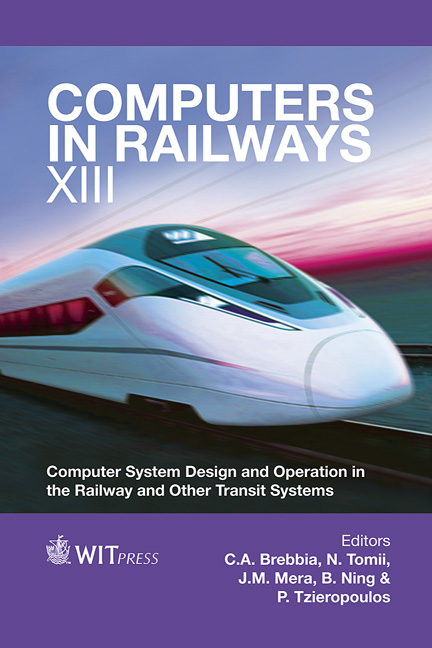The Analysis Of Congested Infrastructure And Capacity Utilisation At Trafikverket
Price
Free (open access)
Transaction
Volume
127
Pages
9
Page Range
359 - 367
Published
2012
Size
3,387 kb
Paper DOI
10.2495/CR120301
Copyright
WIT Press
Author(s)
M. Grimm
Abstract
The capacity utilisation in the Swedish rail network remains constantly high. The competition between approximately forty different railway operators applying for timetable slots continues. Trafikverket performs analysis of the railway capacity with different methods and tools. The calculation of the capacity utilisation is performed annually for the entire railway network. It is based on a common European standard described in the Capacity Leaflet UIC 406. This paper presents the implementation of this method in Sweden as well as the recent results. Trafikverket has, during the annual capacity allocation process, since the year 2007 declared different sections of the network congested. The capacity of congested sections is then analysed in order to find solutions for capacity shortages. Trafikverket performs timetable analysis with the tool TrainPlan and simulations with the tool Railsys. Trafikverket investigates the timetable robustness, calculates headways between trains operating on the double track and defines some guidelines for traffic planners. The Southern Main Line that connects the first and third biggest cities in Sweden- Stockholm and Malmö- has been congested during 2011. This paper presents the variety of methods used while analysing this congested line. In particular, the cooperation with Linköping University within the field of punctuality and timetable robustness is mentioned here, with particular focus on the punctuality studies of the Southern Main Line. Keywords: capacity utilisation, capacity allocation, congested infrastructure.
Keywords
capacity utilisation, capacity allocation, congested infrastructure





